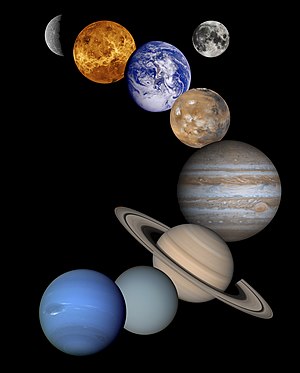You know, we live on a very special planet and for those of us who believe in a Creator God, one that was purpose-built. Well even if you are an atheist or believe in other things the fact remains, this is a very special place. Consider these things..
1 The planet itself is just the right size to have and maintain an atmosphere, more especially one that we can breathe. If the Earth was smaller it could not hold on to its atmosphere, gravity would not be strong enough. If the Earth were larger it would hold on to the more poisonous gasses and the air we now can breathe would not be breatheable and probably far denser too.
2 The Earth is situated at just the right distance from the sun so that it is neither too cold nor too hot having temperatures between -60C to +60C (approximately) with the greater portion of the surface being at a temperature we can live with. Think about the planet Mercury, the closest planet to the sun. It has a daytime temperature that is hot enough to melt the metal lead and a night-time temperature that approaches absolute zero! If it has an atmosphere as some have suggested in more recent times, it is very tenuous indeed, almost a complete vacuum to be precise. Venus, the second closest to the sun does have a very dense atmosphere but it comprises very poisonous gasses, acidic in fact and with a very high temperature also capable of melting lead (>500C).
3 The Earth has an axis which is tilted at 23.5 deg from the ecliptic (the suns apparent path around the sky during the year, which is in fact the path we travel around the sun). This factor alone gives rise to our seasons so that each of the hemispheres are alternately pointed toward the sun then away from it. This allows a temperature variation which when coupled with the tidal motions of the seas and oceans cause us to have a weather system, essential to circulate the atmosphere and the oceans to prevent stagnation. This serves to allow precipitation too, essential for watering the planets flora which in turn produces our food. Now although all the other planets have similar axis tilts with Uranus having one that is tilted at 98 deg making it a very unusual object indeed, none of the other planets are at the same distance as we are away from the sun and their ‘seasons’ are accordingly vastly different from what we would call a season. Only the planet Mars comes anywhere near what we have on earth but without large oceans and a substantial atmosphere to sustain life as we know it.
4 We have a large Moon circling the planet without which we would not have tidal motion. The seas would become stagnant through a lack of movement around the globe which also would considerably affect what resulting weather we might have should it not be there.
5 The Earth has just the right gravitational pull on both ourselves and every other living creature on the planet, including plant life as well as the atmosphere. Anything much stronger would have an adverse effect on our growth and ability to get around. Plants would not be able to grow tall to produce enough fruit and seeds for us to eat. Trees would be stunted and there would be no such thing as jungles or forests. No jungles, no diversity of animal life. No forests, no cover for other plants or animals and no wood for us to use as a building material. Also, as mentioned, the atmosphere would be completely different too.
6 The Sun is just the right type of star to support life on Earth. If it were cooler it would be red, either dwarf in size producing insufficient radiation to keep us warm and well-lit or a supergiant engulfing us! If it was hotter it would most likely be too large and producing way too much radiation, we would in this case be fried! The Sun is also stable and produces a fairly steady output of heat, light and other radiation. As it is the Sun, although just the right size, does produce deadly radiation too. However, because the Earth has a molten iron-based core which produces a very strong magnetic field encompassing the whole planet, this ‘shield’ diverting harmful rays around the planet. Some of this radiation however is drawn into the north and south magnetic poles of the Earth giving rise to the Aurora Borealis and Australis, the northern and southern lights.
Yes this special planet revolves around a special star which circles around a huge galaxy (The Milky Way) at just the right distance from its centre so we are not bombarded with the extremely high radiation levels present where the star density is so great there could never be night-time and the heat would be unbearable. Don’t you think this planet is a very special place?
Shirley Anne

